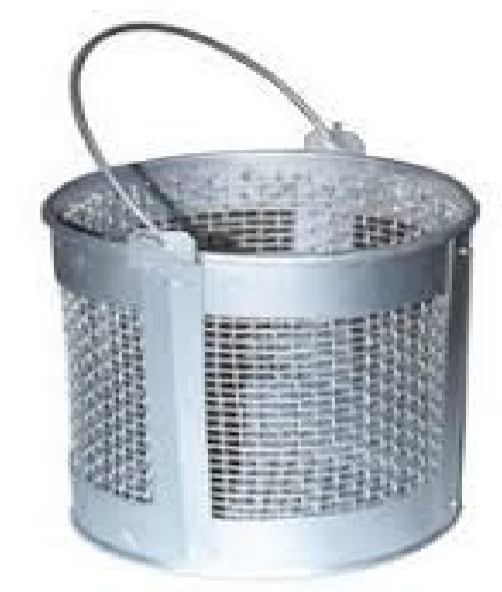Objectives and Significance:-
Water absorption gives an idea on the internal structure of aggregate. Aggregates having more absorption are more porous in nature and are generally considered unsuitable, unless found to be acceptable based on strength, impact and hardness tests.
Aim: –
Aim of this test is to determine the water absorption of coarse aggregates.
Apparatus: –
i) Wire basket – perforated, electroplated or plastic coated with wire hangers for suspending it from the balance

ii) Water-tight container for suspending the basket

iii) Dry soft absorbent cloth – 75cm x 45cm (2 nos.)
iv) Shallow tray of minimum 650 sq.cm area
v) Air-tight container of a capacity similar to the basket
vi) Oven
Procedure: –
i) The sample should be thoroughly washed to remove finer particles and dust, drained and then placed in the wire basket and immersed in distilled water at a temperature between 22 and 32 Degree Celsius
ii) After immersion, the entrapped air should be removed by lifting the basket and allowing it to drop 25 times in 25 seconds. The basket and sample should remain immersed for a period of 24 + ½ hrs. afterwards.
iii) The basket and aggregates should then be removed from the water, allowed to drain for a few minutes, after which the aggregates should be gently emptied from the basket on to one of the dry clothes and gently surface-dried with the cloth, transferring it to a second dry cloth when the first would remove no further moisture. The aggregates should be spread on the second cloth and exposed to the atmosphere away from direct sunlight till it appears to be completely surface-dry. The aggregates should be weighed (Weight ‘A’).
iv) The aggregates should then be placed in an oven at a temperature of 100 to 110 Degree C for 24hrs. It should then be removed from the oven, cooled and weighed (Weight ‘B’)
Results and Calculations: –
Formula: –
Water Absorption = (A-B)/B x 100%
Where A= Weight before Oven Dry
B = Weight after oven dry